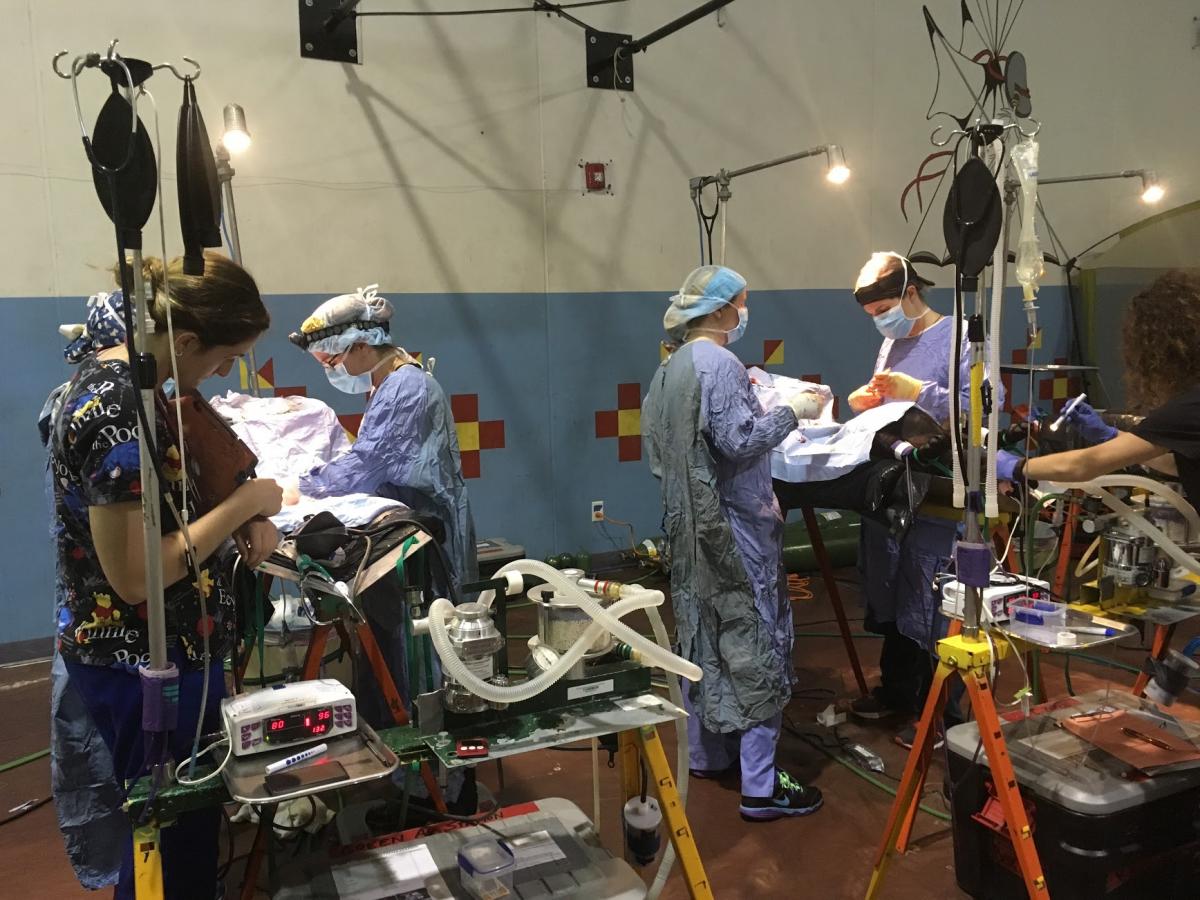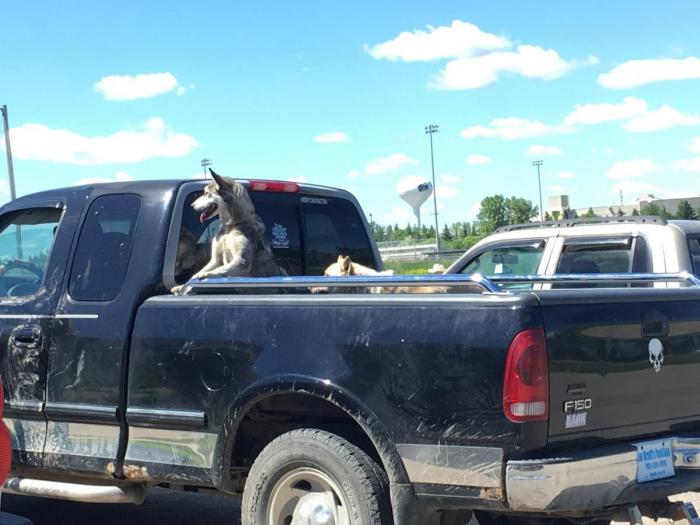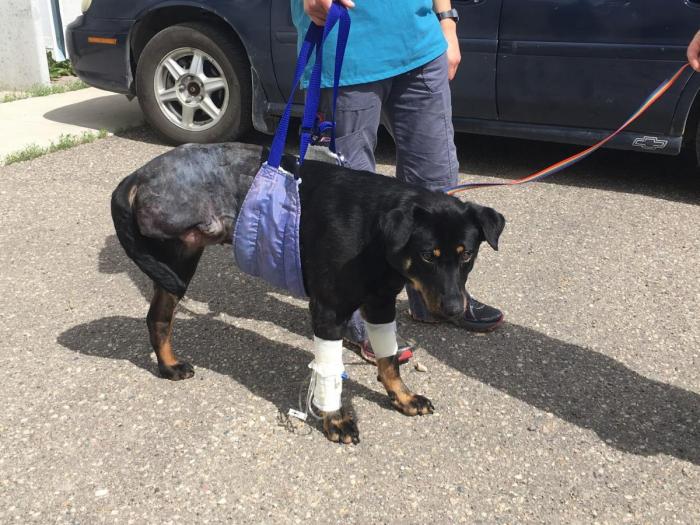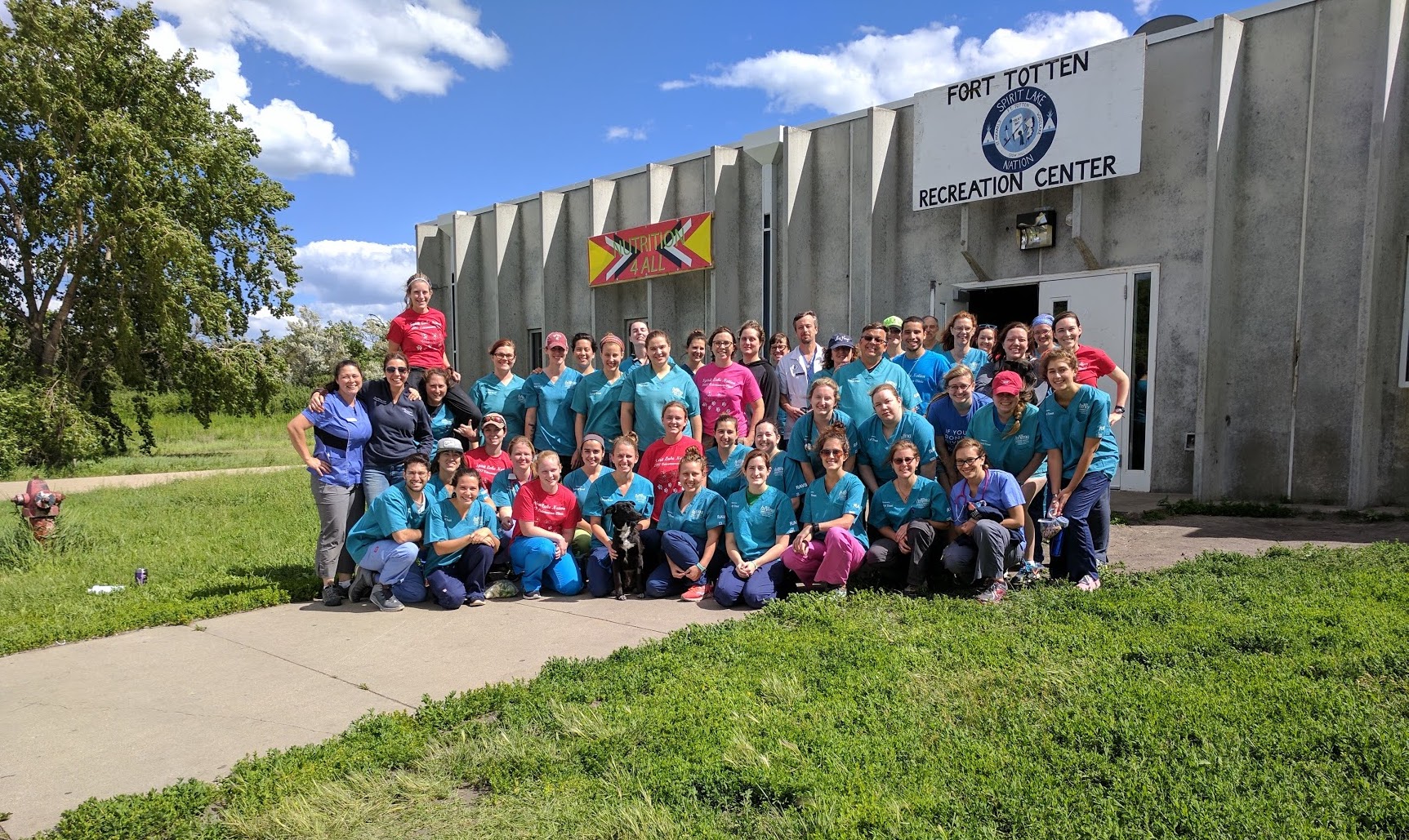Every day I try to appreciate the fact that I have the greatest job in the world. I work with talented and compassionate colleagues, dedicated pet owners, and some of the world’s most well cared for and delightful animals. A few months ago, though, that gratitude suddenly became hard to muster. Maybe it was the barrage of depressing headlines, the series of frustrating cases, or the daily balancing act of being a working mom. Whatever the cause, I needed to adjust my perspective, so in June I dusted off my old camping pack and joined a Humane Society field clinic on the Spirit Lake Lakota Reservation in hopes of refreshing my love of this job. Field work wasn’t new to me. Trips with the Humane Society (HSUS) in my early career had taken me to some of the most neglected, remote, and beautiful parts of the world. However, it had been quite a while since I last worked outside of the ideal conditions of Newton, Massachusetts. In contrast, HSUS sets up clinics in parts of the country that, through poverty or geographic isolation, have no access to veterinary care. Pets in these areas often wait months with severe illnesses and painful conditions before they are seen by a volunteer veterinarian. In addition to treating sick patients, HSUS attempts to help control the pet population in rural areas by offering free spay and neuter surgery along with wellness services like vaccines and dewormings. The volume of work is enormous, but the quality of medical and surgical care at these clinics is never compromised—an important lesson for the veterinary students who would be watching our every move.
I arrived in Bismarck, North Dakota at 9pm to find beef cattle grazing on the outskirts of the city and the sun still high in the sky (later I would appreciate these late sunsets as we worked 16+ hours each day). The next morning I met up with our team—11 experienced veterinary professionals and 26 eager veterinary students—before starting the drive north through endless fields of soybeans, beef cattle, bison, and oil wells to Spirit Lake. Mid-day we arrived at the concrete community center that would be our home and hospital for the next five days. Knowing that a dark and quiet place to sleep, along with strong coffee, would be essential to my sanity over the next week, I immediately sought out a place to set up my camping pad. Space under a worn-down and rather aromatic workout bench became my sanctuary away from the OR for the next few days.
Shortly after our arrival at the community center, an old horse trailer pulled into the drive carrying supplies for the days to come. From this old and humble trailer emerged the myriad of equipment required to convert a community center into a fully functional veterinary hospital. Over a matter of hours the gymnasium transformed into an operating theater, the computer center became a laboratory and pharmacy, and the cafeteria morphed into a series of exam rooms. After a long night of training veterinary students on techniques in medicine and surgery, I climbed into my workout bench shelter and fell asleep instantly.

The next day, pet owners began arriving before sunrise. By 6am as I was finishing my second cup of coffee, the line had already grown into the parking lot and extended around the building. Dogs came restrained with leashes, ropes and garden hoses. Cats were brought in carriers, boxes and pillow cases. Most animals were just waiting loose in the beds of pickup trucks. It occurred to me that this many animals in one place back home would inevitably result in a dogfight, but out on the open plain these dogs seemed to have an understanding and waited in peace. By 9 o’clock that morning, we had admitted 60 animals for surgery—it turned out to be our slowest day.

The next 5 days were a blur of healthy puppies and kittens, wounded or sick animals and very patient pet owners. In our simple OR we removed porcupine quills, injured eyes, mangled limbs, tumors and several thousand ticks. We also provided wellness service to countless animals and got to know their devoted owners who willing to wait all day for the chance to give their pet a healthier life. Every day started at 6am and often went past 11pm, but the enthusiasm of the veterinary students, the hospitality of the community, and the great cooking of some tribal elders kept us energized. By the end of our clinic we had treated over 500 animals and watched several veterinary students become skilled practitioners. On the 6th day, we packed up the equipment for its trip to Standing Rock and headed back home - exhausted, filthy, covered in tick bites and feeling very accomplished.

This season HSUS is expected to provide much needed care to over 8,000 animals through their field clinics. Over 100 veterinary professionals will donate their time and pay their way to staff these clinics. More importantly, 400 veterinary students will learn that challenging conditions do not necessitate compromised care, and that the value of a pet goes far beyond what an owner may be able to pay for its treatment. And, for at least one veterinarian, this HSUS field season has been a reminder of the gift it is to be a veterinarian.
Your Grateful Vet,
Dr. Kate Wissel

